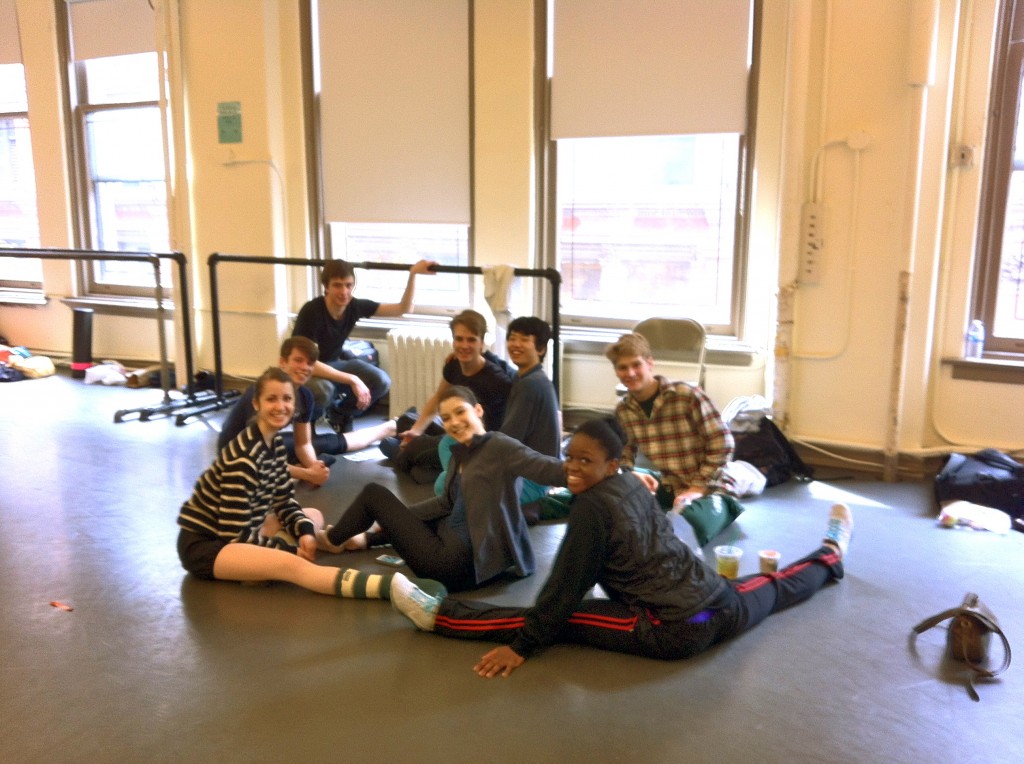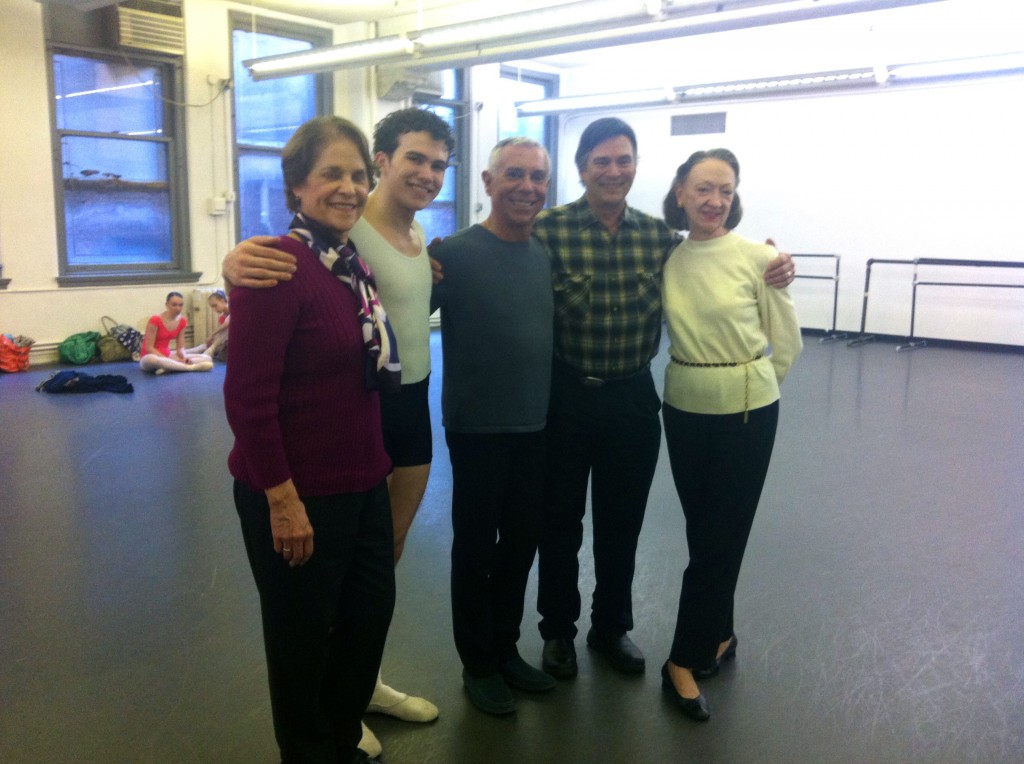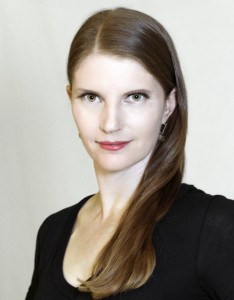Please join me in welcoming our newest contributor Dalia Rawson, who will be writing about ABT’s National Training Curriculum for 4dancers…
by Dalia Rawson
I was finally there, at 890 Broadway in New York City. This building, which houses the Laurence A. Wien Center for Dance and Theatre, is the legendary home of the American Ballet Theatre and ABT’s Jacqueline Kennedy Onassis School. The building boasts floor after floor of dance studios, and it has been the site of rehearsals, classes, and auditions for countless dance companies, dance schools, and Broadway shows.
The building’s rich history is apparent the minute you step out one of its two operator-controlled elevators, into a maze of hallways and staircases leading to countless dressing rooms and dance studios. Innumerable legendary dance teachers have taught in these studios, and I was about to meet one of the most notable. American Ballet Theatre’s Franco De Vita, the co-creator of ABT’s National Training Curriculum and Principal of ABT’s JKO School had invited me to observe three days of classes. Ballet San Jose School is moving towards implementation of ABT’s National Training Curriculum, and I couldn’t have been more thrilled by this opportunity. Raymond Lukens, who co-created the Curriculum with Mr. De Vita, was out of town, so I would be learning about the Curriculum through watching classes taught by Mr. De Vita, as well as classes taught by other faculty members of the JKO School.
I had arrived early, not sure how long it would take to walk from the Chelsea apartment where I was staying to the studios, and found myself with a moment to catch my breath and reflect before classes were to begin. As I waited with the ABT receptionist, sitting under the framed Resolutions passed by the US Senate and House of Representatives recognizing ABT’s service as America’s National Ballet Company, I felt a growing excitement regarding what was to come. Having spent the previous night on a red-eye flight from San Jose to New York after Ballet SJ School’s Summer Intensive Auditions, I was slightly disoriented, adding to the almost surreal surge of anticipation I was feeling about seeing some of our nation’s most talented dance students up close in class. As it turns out, I wasn’t disappointed.

I was taken into a studio and told that the first class I would be observing would be a Level 6/7 class taught by Mr. Keith Roberts. Mr. Roberts was obviously a popular teacher, as the students seemed happy to hear he would be teaching the class. He told me that he liked to focus on letting the students dance in his class, giving them the chance to really move. The class was made up of ten young women and four young men. The group was charming, each student a young artist with his or her own set of talents. There wasn’t a uniform look to the students; some were long and lanky, others more petite, with a variety of proportions and attributes. What they all shared was a glow of youth, talent, optimism, and health, and it was beautiful to see such talented young artists working in what was obviously such a richly inspiring environment.
The second class I observed was a class for about 8 young men, looking to range in age from about 12 to about 15. Franco De Vita himself was teaching this class, and it soon became evident why practically everyone to whom I had spoken about the ABT Curriculum has an almost disciple-like devotion to the man. He embodies every quality one hopes to find in a master teacher. His class is completely engrossing, demanding perfect attention from students at all times. His combinations are simple, letting the students focus on and perfect their technique through repetition and attention to detail. His class reflects an unwavering understanding of technique, and seemed in this instance to focus on coordinating the upper to the lower body, on precise execution of the basics at all times, and on maintaining an unyielding musicality. Corrections were barked with humor; and though students were held to the highest of standards and immediately reprimanded should they forget a combination or correction, it was obvious that each student understood the respect and fondness their teacher had for them, and that they returned these feelings in kind.
Classes went by in a whirlwind over the following days. The Children’s Division classes impressed me by including students with an enormous range of physical proportions and natural gifts, each performing classical technique to the full extent that their physicality allowed, and no further. If a student could turn out 45 degrees, then they executed every tendu and every plié from a position turned out exactly 45 degrees, perfectly placed, with their knees over their toes at all times. This level of discipline, applied to such a range of natural facility, achieved a level of perfection in execution that I have never before seen in an open enrollment class.
Watching the Studio Company in class and rehearsal was a rare privilege. It was inspiring to witness the optimism and talent of these young artists in a succession of excellent classes led by De Vita. I could see in the faces of the students chosen to work with the Studio Company that they were not taking lightly the opportunity to train with one of the most gifted teachers of our generation. Each young artist applied himself or herself fully to every minute of class and rehearsal, and my mind is still reeling with images of lovely sustained turns and balances, light jumps, clean, lengthened lines, impeccable port de bras, and honest exuberance.

Highlights of my time at the JKO School included watching a rehearsal for Balanchine’s Tarantella that boasted all the charm and fireworks one would expect from company soloists, and watching the pas de trois from Swan Lake; danced for an invited audience of school children with elegance and strong technique. I could have spent an additional week or more just watching Carmella Gallace, a former principal of the Moiseyev Company, teach character class. I furiously tried to scribble down her combinations so that I could incorporate some of her ideas into my own character classes, while watching her pass on to her students the secrets of maintaining a feminine port de bras and upper body while beating out complicated rhythms with the feet.

I returned to San Jose with a notebook full of combinations and cryptic notes, thankful that I had written down as much as I did, as I can’t for the life of me remember a single combination on my own. It has all become a blur of cap-sleeved leotards and pointed feet! But what remains clear is that the man who co-created the ABT National Training Curriculum is a rare master, the type of teacher you are lucky to come across once in a lifetime. The chance to train with one who so fully understands ballet technique is invaluable. I hope to one day achieve a similarly developed ability to pass on the technical elements of classical ballet to my students with a clarity that allows for the development of true artistry. I am left confident and inspired, and can’t wait for May 30, when Mr. De Vita and Mr. Lukens will come to our studios at Ballet San Jose School to work with our faculty and dancers! I am excited to see how we all will flourish under their guidance, and how we at Ballet San Jose School will benefit by implementing the structure of ABT’s National Training Curriculum.

Principal of Ballet San Jose School and the Artistic Director of The Rawson Project Contemporary Ballet, Dalia Rawson was recently awarded a Fellowship by the New York Choreographic Institute. She founded The Rawson Project in 2010 in order to support the creation of new works that fuse classical ballet technique with a contemporary aesthetic.
As a dancer, Rawson performed a wide variety of leading roles with Ballet San Jose, (formerly Cleveland Ballet), from 1991 through 2006. Rawson’s choreography has been performed both by Ballet San Jose and the Ballet SJ School, and for her own company she has created a repertory of award-winning ballets that showcase the virtuosity, expressive range, and extreme lines of classically trained dancers in edgy and original dances.





Franco de Vita and Raymond Lukens have given the world of ballet a great gift. I am so grateful to have learned the ABT curriculum from its original sources. My students, instructors and I have benefitted greatly from the Curriculum’s logical progression of technique. Mr. Lukens is examining my students this week…it’s been challenging and a bit stressful for all of us, but so worth it.
I really enjoyed your blog! It struck a cord, reminding me of my time at ABT coordinating their Dancer Reunion. I had the same feeling of awe and excitement while working at 890 – surreal indeed. (I blogged about the experience at http://wp.me/p1C45x-4T, if you care to read).
I also worked with Franco De Vita at the Antony Tudor Centennial Celebration at Juilliard, where JKO students performed Tudor’s work in-studio and participated in a demonstration of exercises and combinations from classes originally taught by Tudor. http://antonytudor.org/centennial/centennial.html. Franco is a gem!
Best of luck in implementing the ABT National Training Curriculum!